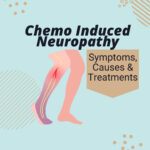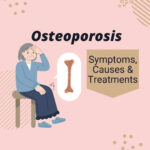Ayurveda is an ancient healing system that originated in India over 5,000 years ago. The term Ayurveda is derived from the Sanskrit words “ayur” (life) and “veda” (knowledge), which translates to knowledge of life. This holistic approach to health and wellness emphasizes the balance between the mind, body, and spirit to achieve optimal health.
The principles of Ayurveda are based on the belief that each person is unique and has a specific mind-body constitution known as a dosha. There are three doshas: Vata, Pitta, and Kapha, and each person has a unique combination of these doshas. The goal of Ayurveda is to balance these doshas through diet, lifestyle, and herbal remedies to promote good health and prevent illness.

Fundamental Ayurvedic Principles
One of the fundamental concepts of Ayurveda is the three doshas, which are Vata, Pitta, and Kapha. These doshas are three energy forces that govern the body and mind. Each dosha is associated with different physical and mental characteristics. Understanding your dosha can help you make lifestyle choices that promote balance and well-being.
Vata
Vata is associated with the elements of air and ether. It is responsible for movement and governs bodily functions such as breathing, circulation, and elimination. People with a Vata constitution tend to be thin, have dry skin, and experience anxiety and restlessness.
Pitta
Pitta is associated with the elements of fire and water. It is responsible for digestion and metabolism and governs bodily functions such as hunger, thirst, and body temperature. People with a Pitta constitution tend to have a medium build, oily skin, and experience anger and irritability.
Kapha
Kapha is associated with the elements of earth and water. It is responsible for stability and structure and governs bodily functions such as growth, lubrication, and immunity. People with a Kapha constitution tend to have a larger build, oily skin, and experience lethargy and attachment.
The Role of Ayurveda in Health and Wellness
Ayurveda emphasizes the importance of maintaining balance in the body, mind, and spirit through diet, exercise, and other lifestyle interventions. For example, Ayurvedic practitioners may recommend specific dietary changes based on a person’s dosha, such as avoiding spicy foods for Pitta types or consuming warm, nourishing foods for Vata types.
In addition to dietary changes, Ayurveda also promotes the use of massage and other bodywork techniques to promote relaxation and balance in the body. Ayurvedic massage, or Abhyanga, involves the use of warm oils and gentle strokes to stimulate the flow of energy and remove toxins from the body.
Ayurvedic Diagnosis and Treatment
According to Ayurveda, illness occurs when there is an imbalance in the three doshas, or energies, that govern the body: Vata, Pitta, and Kapha.
Diagnosis
Ayurvedic diagnosis involves a detailed examination of a patient’s symptoms, medical history, and lifestyle. Practitioners may also use pulse diagnosis, which involves feeling the pulse at various points on the wrist to assess the balance of the doshas. Other diagnostic techniques may include tongue examination, urine analysis, and observation of the patient’s physical appearance.
Example: For a diagnosis of osteoarthritis in the knee, a practitioner would
- look for signs of Vata imbalance, which is considered to be the primary dosha involved in osteoarthritis. Vata imbalance can cause dryness, stiffness, and pain in the joints, which are all common symptoms of osteoarthritis.
- evaluate the patient’s diet and lifestyle to identify any factors that may be contributing to the development of osteoarthritis. For example, a diet that is high in processed foods, sugar, and unhealthy fats can contribute to inflammation and joint damage.
Treatment
Ayurvedic treatment aims to restore balance to the doshas and promote overall health and well-being. Treatment may involve a combination of dietary changes, lifestyle modifications, herbal remedies, and therapies such as massage and yoga.
Herbs and oils are commonly used in Ayurvedic medicine to treat a wide range of conditions. For example, ashwagandha is often used to reduce stress and anxiety, while laxatives and enemas may be used to treat digestive disorders. Medical oils, such as sesame oil or coconut oil, may be used in massage or other therapies to promote relaxation and improve circulation.
One of the most well-known Ayurvedic therapies is Panchakarma, a detoxification program that involves a series of cleansing treatments to remove toxins from the body. Panchakarma may include procedures such as massage, steam therapy, and nasal cleansing.
Example: For a diagnosis of osteoarthritis in the knee, a practitioner may recommend a personal treatment plan like that:
- Diet: The practitioner would recommend a diet that is rich in anti-inflammatory foods, such as fresh fruits and vegetables, whole grains, and lean protein. They may also recommend avoiding foods that are known to cause inflammation, such as processed foods, fried foods, and sugary drinks.
- Herbal remedies: The practitioner may recommend specific herbs and supplements that can help reduce inflammation and support joint health. Some examples include ginger, turmeric, boswellia, and ashwagandha.
- Massage and other therapies: The practitioner may recommend massage, acupuncture, or other types of bodywork to help reduce pain and improve joint mobility. They may also recommend yoga or other gentle exercises to help strengthen the muscles around the knee joint.
- Lifestyle changes: The practitioner may recommend lifestyle changes to help reduce stress and support overall health. This may include getting regular exercise, practicing meditation or other relaxation techniques, and getting enough sleep.
- Panchakarma: In some cases, the practitioner may recommend a more intensive treatment called panchakarma, which involves a series of cleansing and rejuvenating therapies. This can help remove toxins from the body and promote healing.
It’s important to note that Ayurvedic treatment plans are highly individualized, and may vary depending on the patient’s specific symptoms and needs. It’s always best to work with a qualified Ayurvedic practitioner who can develop a personalized treatment plan based on your unique needs.
Ayurveda and Diseases
Research has shown that Ayurveda can be effective in treating a range of diseases, including anxiety, depression, and digestive disorders. However, more studies are needed to fully understand the potential benefits of Ayurveda for various diseases.
While Ayurveda has been practiced for thousands of years, it is important to note that it is not a replacement for Western medicine. However, Ayurveda can be used as a complementary approach to traditional treatments.
Research on Ayurveda is still in its early stages, and more studies are needed to fully understand its effectiveness. However, there is evidence to suggest that Ayurvedic treatments can be beneficial for certain conditions. For example, a study published in the Journal of Alternative and Complementary Medicine found that Ayurvedic treatments were effective in reducing symptoms of rheumatoid arthritis.
Safety and Regulations of Ayurveda
While Ayurveda has been used for centuries and is generally considered safe, there have been concerns about the safety and regulation of Ayurvedic products. Some Ayurvedic products have been found to contain high levels of heavy metals such as lead, mercury, and arsenic, which can be harmful to health.
To address these concerns, international standards for the safety and quality of Ayurvedic products have been implemented. The World Health Organization (WHO) has developed guidelines for the safety and efficacy of traditional medicine, including Ayurveda. The WHO guidelines recommend that Ayurvedic products be tested for heavy metals and other contaminants and that they meet certain safety and quality standards.
Frequently Asked Questions
What are the 5 principles of Ayurveda?
Ayurveda is based on five principles, or elements, which are believed to make up everything in the universe. These principles are earth, water, fire, air, and ether. In the human body, these elements combine to form three doshas: Vata, Pitta, and Kapha.
What are the beliefs of Ayurveda?
Ayurveda is a holistic system of medicine that believes in the interconnectedness of mind, body, and spirit. It emphasizes the importance of balance in all aspects of life and seeks to promote health and prevent disease through natural means.
What is an Ayurvedic lifestyle?
An Ayurvedic lifestyle involves following a daily routine that is tailored to an individual’s dosha type. This routine may include practices such as meditation, yoga, and eating a balanced diet. It also involves avoiding harmful habits such as smoking and excessive drinking.
What does an Ayurveda practitioner do?
An Ayurveda practitioner is a trained professional who uses Ayurvedic principles to diagnose and treat illnesses. They may use a variety of techniques, including herbal remedies, massage, and dietary changes, to help their patients achieve optimal health.
What are the benefits of Ayurveda?
Ayurveda is believed to offer a wide range of health benefits, including improved digestion, reduced stress, and increased energy levels. It is also thought to be effective in treating a variety of conditions, such as arthritis, asthma, and high blood pressure.
What are some Ayurvedic herbs?
Ayurvedic herbs are a key component of Ayurvedic medicine. Some commonly used herbs include ashwagandha, turmeric, and ginger. These herbs are believed to have a variety of health benefits and are often used in Ayurvedic remedies and treatments.
You May Also Like
- How To Improve Gut Microbiome – 26 May 2024
- Chemo neuropathy treatment: What to do? – 19 May 2024
- How to Prevent Osteoporosis: Effective Strategies & Simple Steps – 28 December 2023








